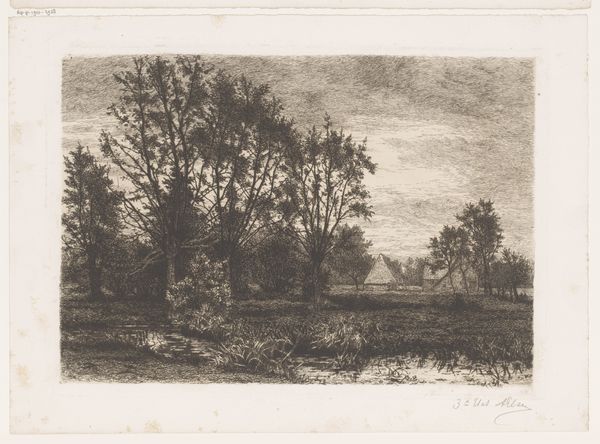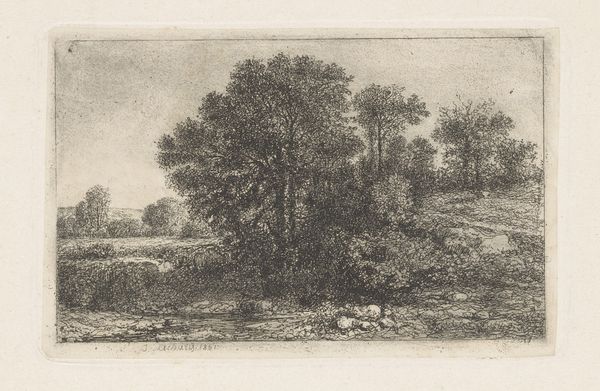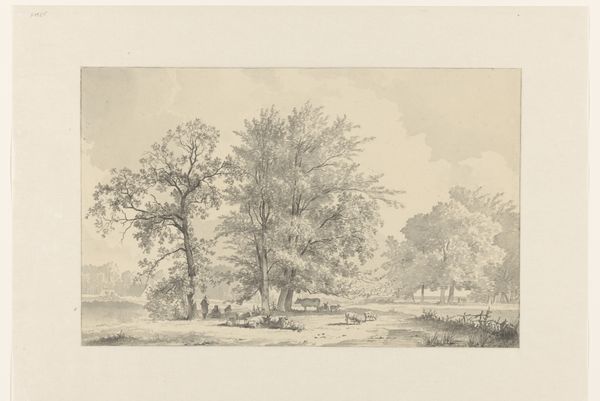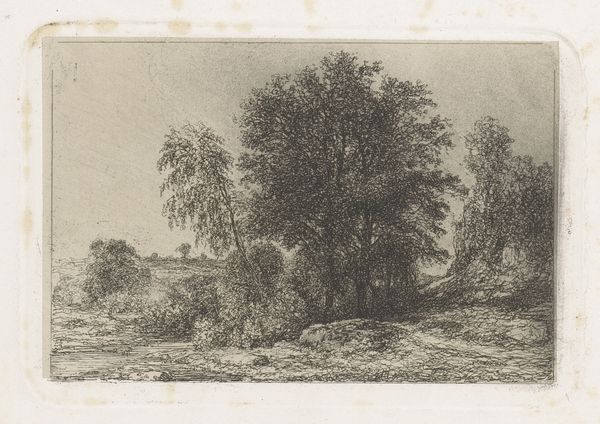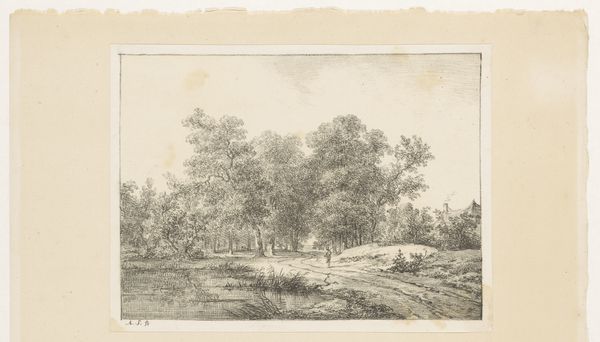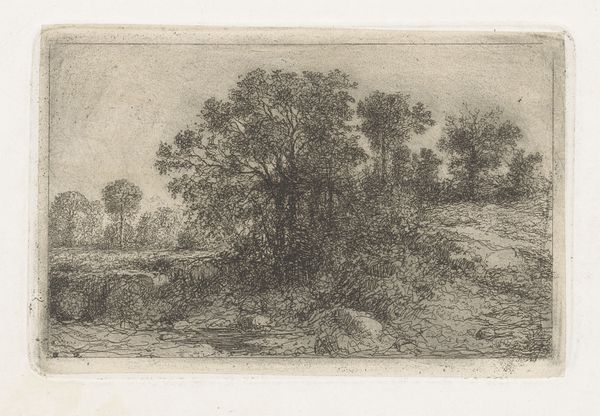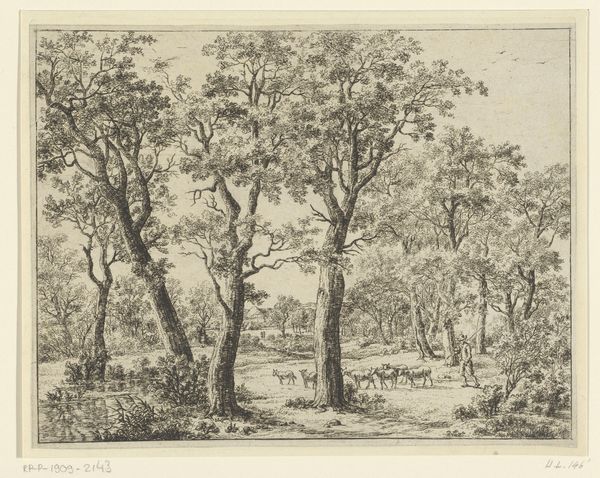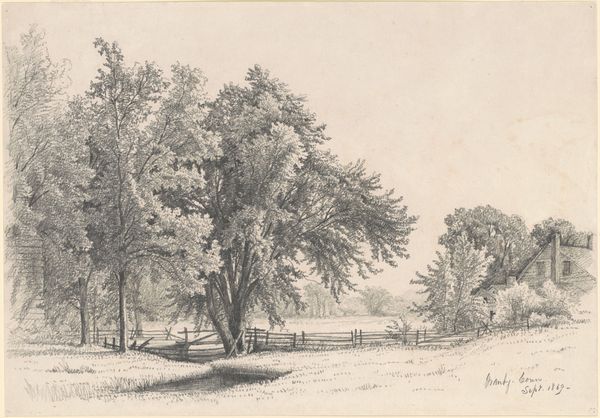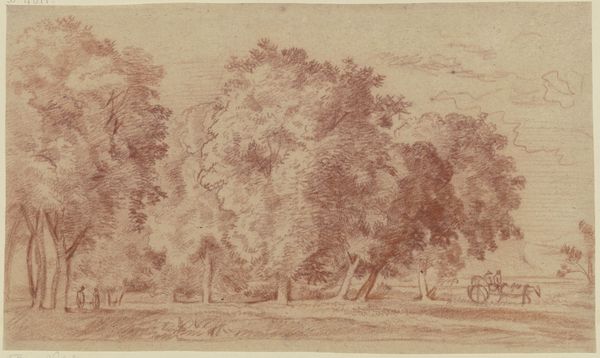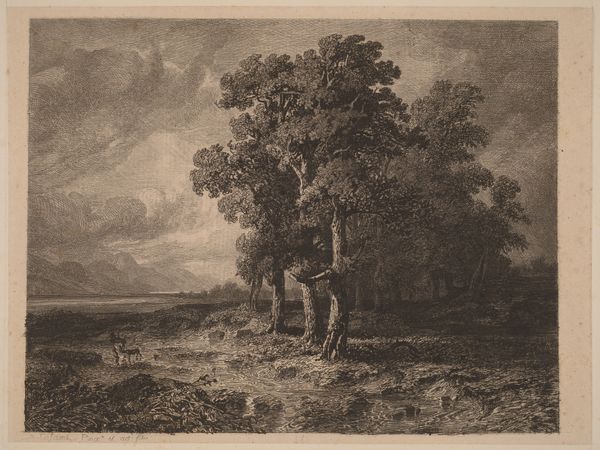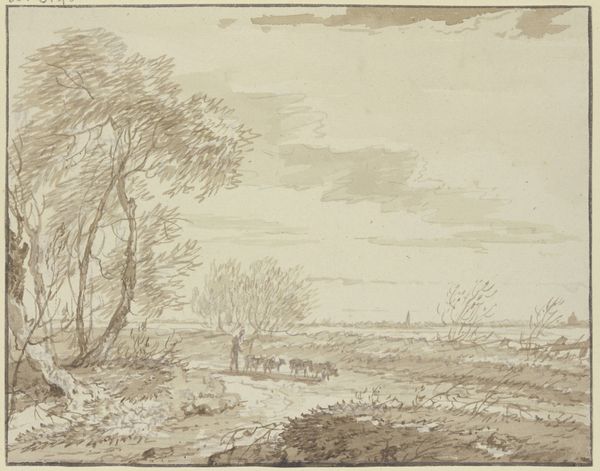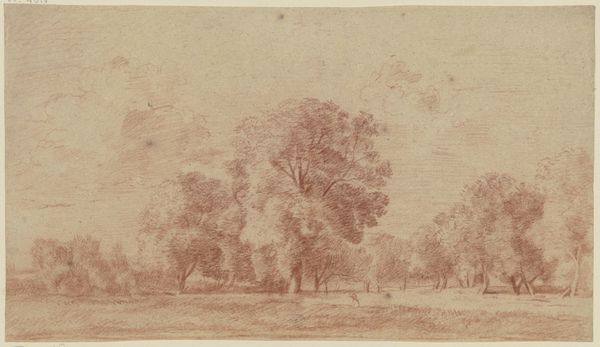
#
neoclacissism
# print
#
landscape
#
genre-painting
#
realism
Dimensions: plate: 24.6 x 32.6 cm (9 11/16 x 12 13/16 in.) sheet: 25.9 x 34 cm (10 3/16 x 13 3/8 in.)
Copyright: National Gallery of Art: CC0 1.0
Curator: This is Martin von Molitor's "A Meadow with Cattle at the Edge of a Wood," a print dating back to around 1790. Editor: There’s a melancholy to it, isn’t there? All muted greys and soft light. It reminds me of that feeling just before a summer storm. And look at those methodical etchings that form the clouds. Curator: It speaks to the era's fascination with pastoral scenes and a return to an idealized nature, fitting neatly into both neoclassical ideals and elements of realism. Those cows, for example, they're not just livestock, they represent an enduring image of rustic stability. Editor: The printing process itself, though – etching, with its acid and metal plates – it’s such a stark contrast to the gentleness of the landscape it depicts. So industrial, yet yielding this bucolic vision. The labor is hidden, consumed. Curator: That interplay of hard labor and idyllic fantasy highlights a key tension. Prints allowed for wide distribution, democratizing access to art and ideas about nature's role in society. But I find this scene more about symbolic permanence than revolution. Consider how carefully the artist represents each cow – not realistically individualized, but representing a collective ideal. Editor: Absolutely, but those methodical marks created by hand—etched, yes, with the assistance of acid on copper—that's where the materiality gets really interesting. What was Molitor’s studio practice like? What inks were accessible? Was this intended for widespread consumption or a wealthy patron's collection? These questions remind us art doesn't magically appear. Curator: So, for you, it's as much about understanding its physical creation, than it is about grasping the symbolic meanings in the images itself? I tend to consider how the seemingly quiet harmony invites us to contemplate the enduring connection between humanity and nature—a concept Molitor seems intent on reinforcing through familiar forms. Editor: It's inseparable for me! I agree the symbolic is definitely at play here and impossible to ignore—but to know what ink, what tool made that stroke, and what impact those consumables had on Molitor's world...it shifts the conversation away from pure aesthetics to production itself! Curator: Thinking of production as integral to this piece really deepens my view of it! I can see it invites multiple, possibly endless interpretations. Editor: Agreed! Now, the landscape’s melancholy mood echoes in its methods, for me. Thanks for walking through that.
Comments
No comments
Be the first to comment and join the conversation on the ultimate creative platform.

